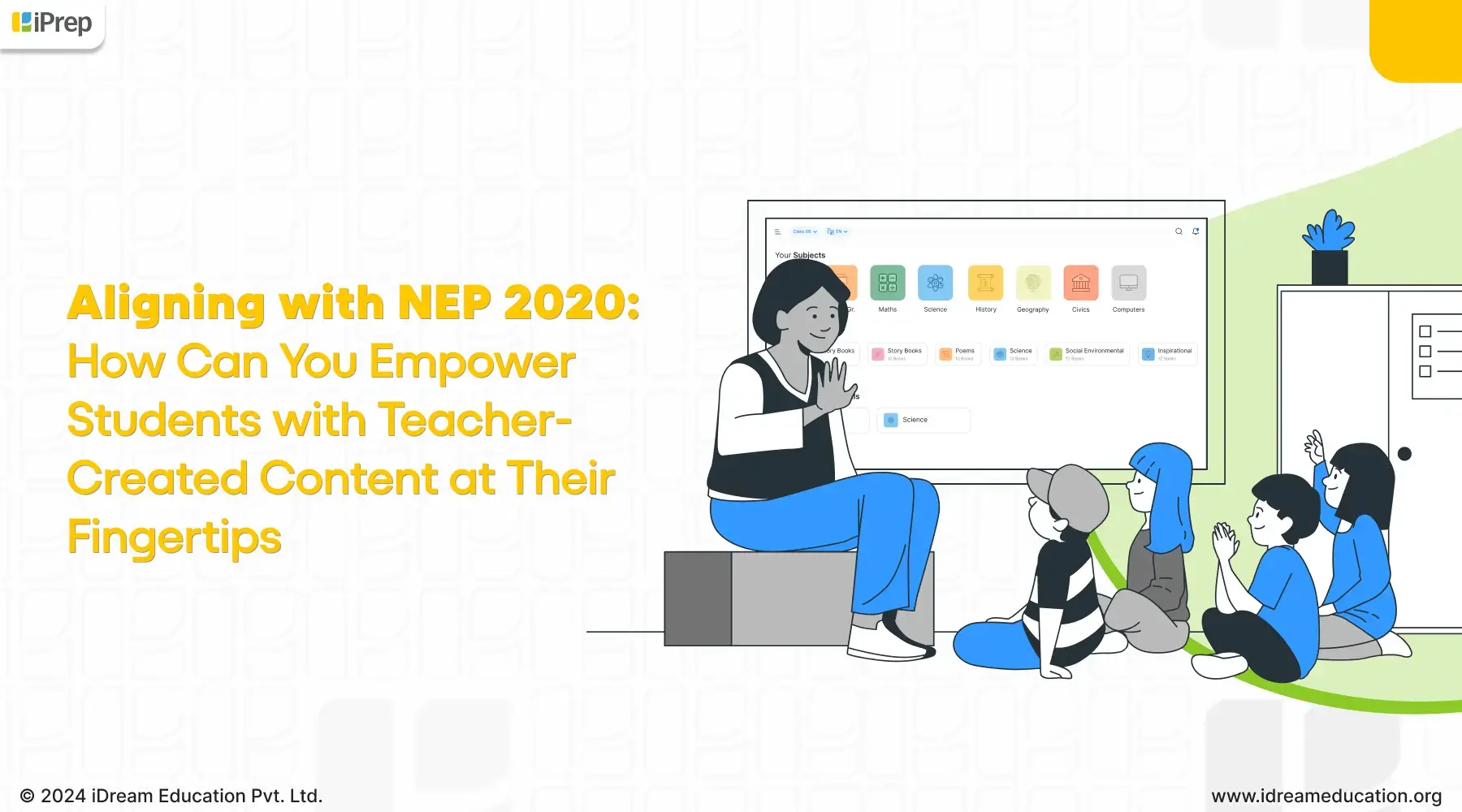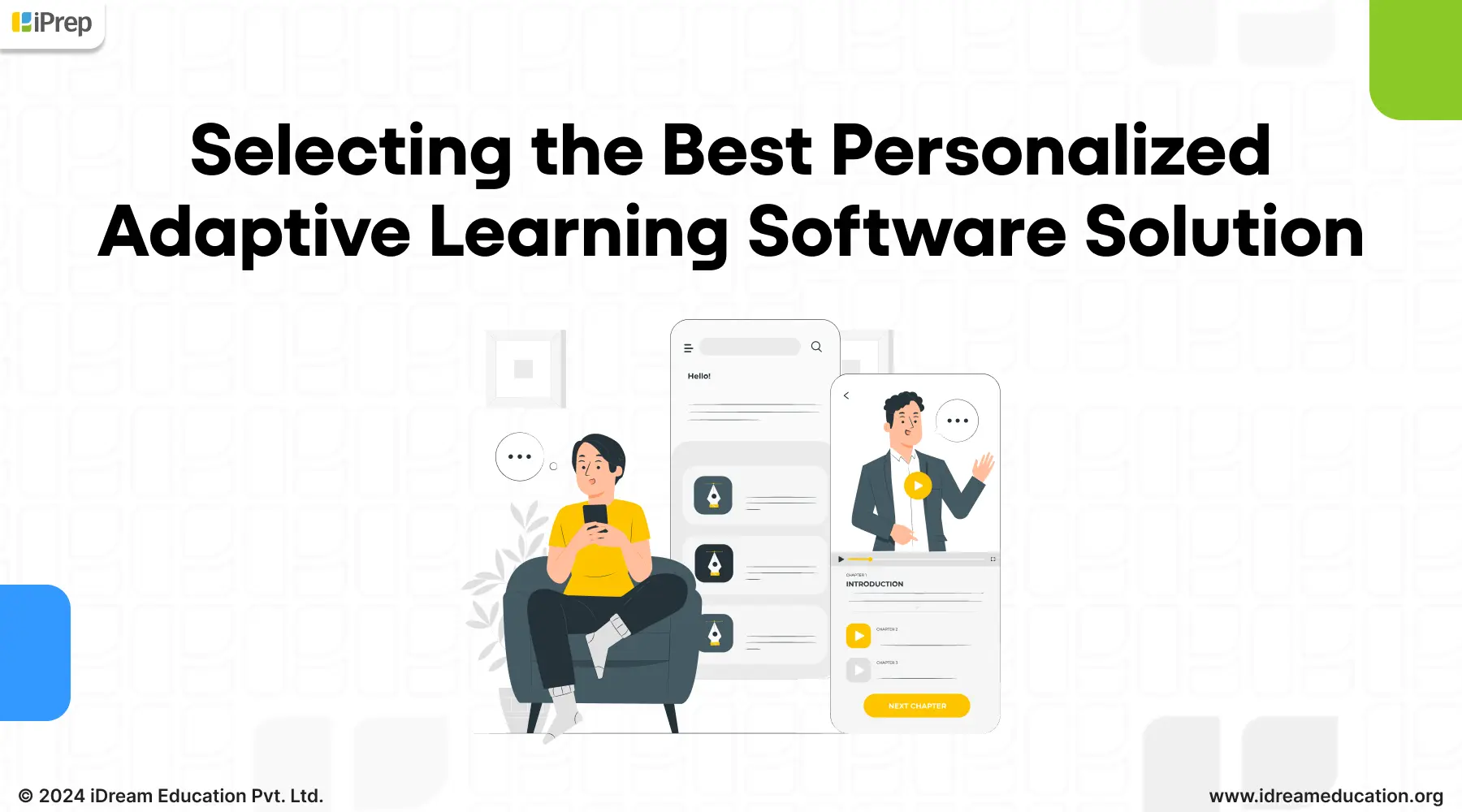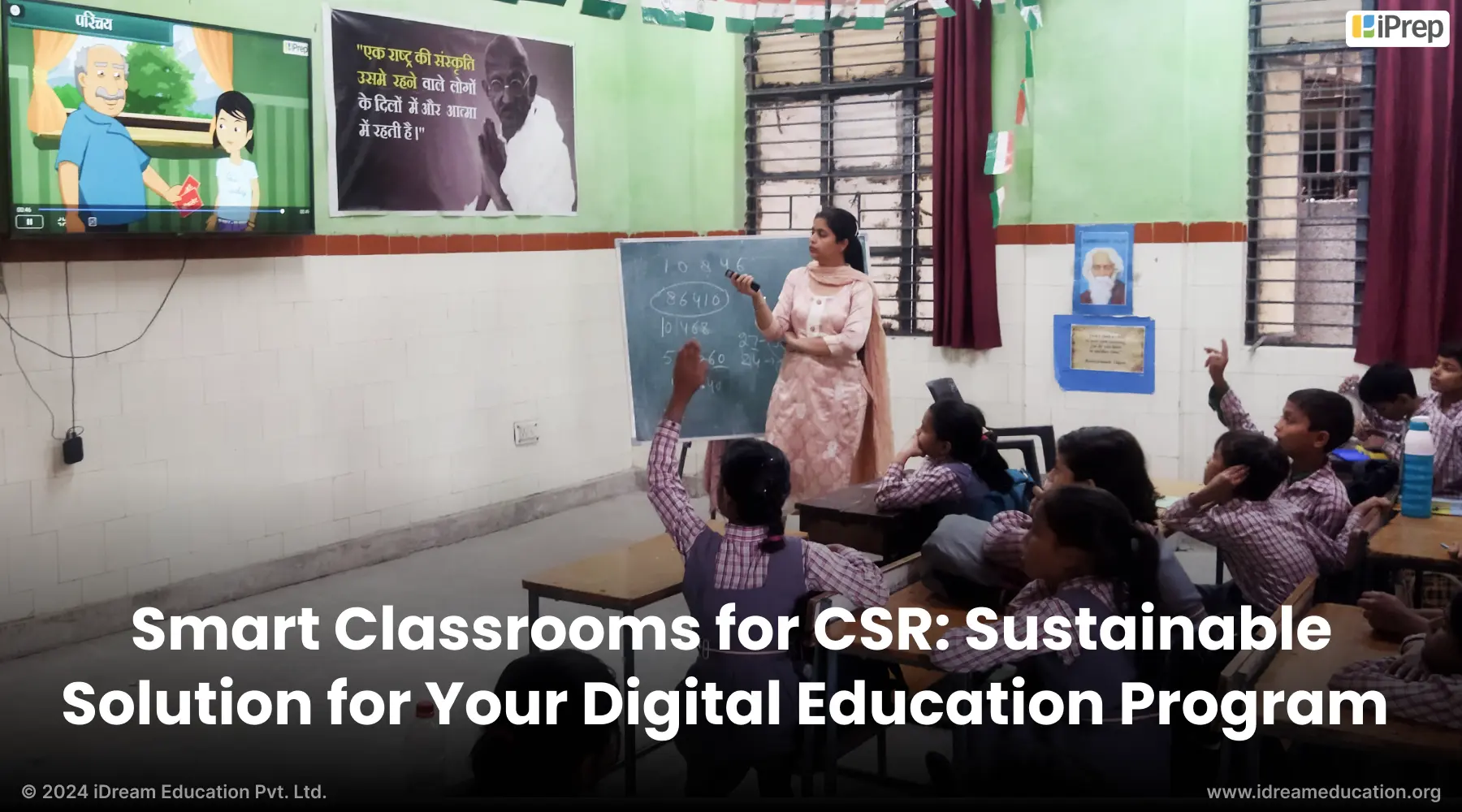What is a Digital Library? Exploring The New-Age Learning Repository
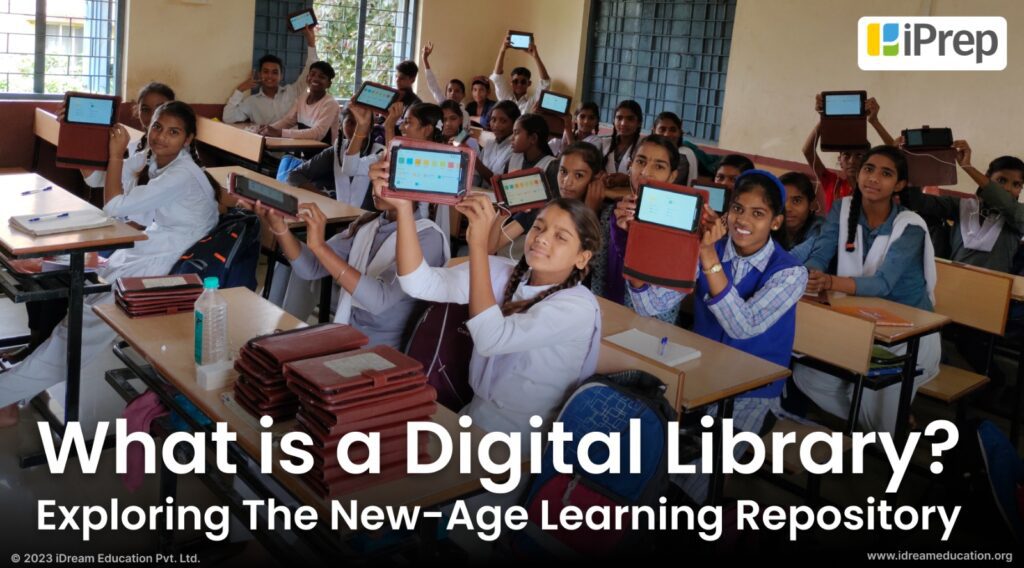
The contrast between the idea of a traditional library and a digital library shows just how much technology has changed education for the new generations of learners.
A traditional library feels calm and peaceful, filled with old books that hold centuries of knowledge. The scent of aged paper and the hushed whispers of eager readers create an atmosphere steeped in reverence for the printed word.
On the other hand, a digital library is a testament to the rapid evolution of technology in education. Here sleek screens replace the tangible weight of books and information flows seamlessly, accessible at one’s fingertips, transcending the constraints of physical space.
What is a Digital Library?
A digital library is like a treasure trove of e-learning material like e-books, e-journals, audiobooks, articles, images, videos, and more.
A Digital Library enables learners to explore and discover information using digital devices like computers, laptops, tablets, and smartphones.
We can think of a digital library as a virtual library that you can visit from anywhere with or without internet access.
Digital libraries are super organized and easy to search, making it a breeze to find exactly what you’re looking for. They’re a fantastic way to access a lot of knowledge in a short amount of time in any form or language without leaving your seat.
Digital Library Concept in Modern Education
In modern education, digital libraries are a game-changer.
Introducing a digital library in schools for students and educators is akin to placing an expansive repository of knowledge at their immediate disposal.
Students and teachers can have access to all curriculum-based content like textbooks, practice papers, books for reading, interactive video lessons, and other multimedia content with just a few clicks.
Image of teacher and students interacting with content
Digital libraries go beyond conventional curriculum resources, offering students access to age-appropriate digital learning materials that foster cognitive development. These supplementary resources are important for the holistic development of students.
With the help of a digital library, students can delve into subjects deeply, and teachers can supplement their lessons with a wide range of e-learning resources to help bring better learning outcomes.
Plus, digital libraries promote inclusivity, allowing students from various backgrounds to access the same high-quality learning content. It’s like having a cutting-edge library tailored to every student’s needs. An all-in-one solution for learning and reading.
How to Create a Digital Library for School Students: A Step-by-Step Guide
Creating a digital library for school students can be a fantastic resource for learning and research. Here are steps you can follow to set up a digital library:
Step 1: Specify Your Goals
- Determine the grade levels and subjects to which your digital library will cater.
- Determine the educational goals you wish to accomplish with the digital library (e.g., supplement classroom learning, encourage independent research, facilitate overall development).
Step 2: Select Content and Resources
- Focus on textbooks, reference materials, educational videos, and interactive content that are aligned with the curriculum of the school.
- Include a variety of media formats, such as e-books, PDFs, videos, interactive assessments, and educational games, to accommodate various learning styles.
Step 3: Select an Appropriate Platform
- Choose platforms that facilitate digital education content administration, such as iPrep by iDream Education which can be integrated into the school management systems.
- Choose platforms with security features to protect students, teachers, and schools’ privacy and restrict unauthorized access.
Step 4: Acquire and Arrange Content
- Ensure that you have the appropriate permissions to use and distribute the content, particularly for copyrighted materials.
- Create distinct categories or folders to facilitate student access to relevant resources for their grade and subject.
Step 5: Implement a User-Friendly Navigation System
- Ensure that the digital library platform has an intuitive interface that students can navigate with ease.
- Provide options for searching and filtering so that students can swiftly locate the materials they require.
Step 6: Integrate Interactive Components
- To reinforce learning, including interactive quizzes, exercises, and educational activities.
- Promote a sense of community and promote material-related discussions.
Step 7: Focus on accessibility and security
- Ensure that all content is age-appropriate for the designated age group.
- Educate students on internet safety and proper online conduct.
Step 8: Engage Students and Encourage Feedback
- Promote Usage: Encourage teachers to incorporate digital library resources into their lessons and assignments.
- Feedback Mechanism: Provide a way for students and teachers to give feedback on the content and functionality of the digital library.
Advantages of a Digital Library in Schools
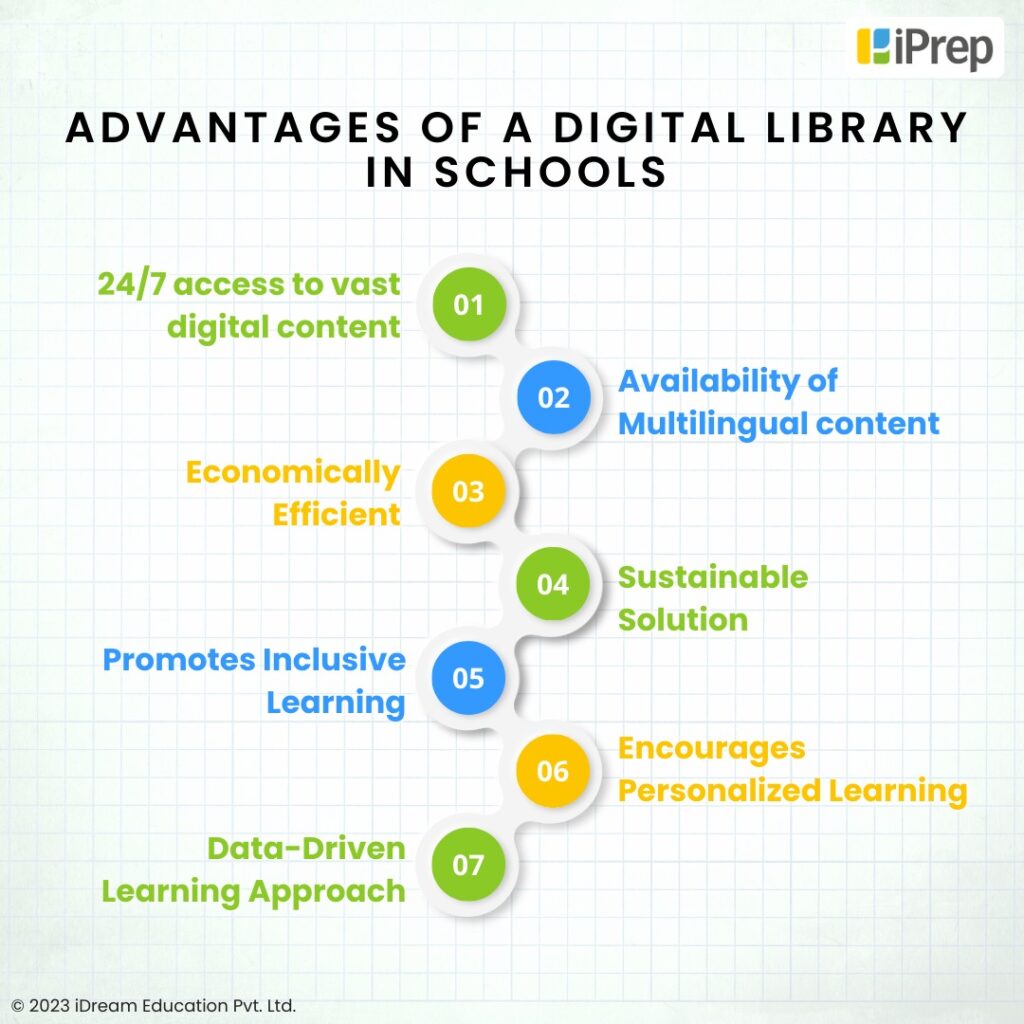
The addition of a digital library in schools offers numerous advantages for students and educators. It helps elevate the overall classroom learning environment with a touch of digital education.
Here are some of the key benefits of a digital library-
1. Accessibility and Convenience:
Digital libraries provide students with 24/7 access to a vast array of resources from anywhere with or without an internet connection.
A digital learning platform like iPrep integrates curriculum-aligned content into various digital tools, enhancing learning through smart classes, tablets, and smartphones in schools.
With this solution, students and teachers have regular access to rich e-learning resources while in the classroom (with the help of smart classrooms), in the library (with the help of tablets), and at home (with the help of smartphones).
2. Diverse and Multilingual Content:
Digital libraries can offer a wide range of multimedia content including e-books, articles, videos, audiobooks, and interactive learning materials in multiple language mediums. This diversity caters to the needs of various grade-level students from any region, providing them with age-appropriate content that is best suited for them.
3. Cost-Effective:
Keeping a rich depository of physical books and maintaining them can become economically challenging. Establishing a digital library offers affordable access to a vast e-learning resource pool, free from physical storage, maintenance, or replacement expenses.
4. Searchability and Organization:
One of the key benefits of a Digital library is that it comes with powerful search and indexing features. This makes it easier for students to locate specific information quickly and promotes efficient research and learning.
5. Space Efficiency:
While physical libraries require space for shelves, study areas, and seating, a digital library with a moveable trolly loaded with tablets eliminates the need for physical space to learn, allowing schools to allocate space for other educational purposes.
6. Up-to-date Information:
A digital library can be updated in real time, ensuring that students always have access to the latest and most relevant information. This is especially important in fields such as science and technology, which are undergoing rapid change.
7. Environmentally Friendly:
One very important advantage of a Digital library is that It reduces the need for printing and physical materials as learning content is made available through digital devices such as tablets/notebooks etc. This in turn has a positive effect on the environment by saving trees and promoting a more sustainable learning environment.
8. Interactive Learning Opportunities: With the help of interactive elements such as quizzes, multimedia presentations, and practical life skill assessments digital libraries provide students overall with an engaging learning experience that increases their learning levels.
9. Customized Learning Paths: A key benefit of digital libraries such as iPrep smart ICT Labs in schools is that they allow the integration of personalized adaptive learning, where digital learning for K-12 can be tailored to individual student needs, interests, and learning styles.
10. Inclusivity and Accessibility: Digital libraries can be designed to accommodate a wide range of learners, including those with disabilities. Text-to-speech features, adjustable font sizes, and compatibility with screen readers are some examples of inclusive design.
A real-life example of Shadaf, a young boy who has had hearing problems since birth, significantly showed improvement by interacting constantly with e-learning content such as animated videos on the iPrep Tablet. This practical example of one student can be implemented for multiple students promoting inclusivity in education.
11. Data Analytics and Reporting: Digital library implementation in schools gives the advantage of automatically syncing student-specific usage reports to a cloud-based reporting dashboard while they interact with learning content providing valuable insights to educators about the interests and needs of the learners.
This information can be used to refine the curriculum, identify areas of improvement, and tailor resources to meet specific learning objectives.
12. Promotes Information and Digital Literacy: Interacting with digital learning tools and e-learning content encourages students to develop critical thinking and information.
Installed in schools urban and rural, a Digital Library fosters digital literacy by teaching source evaluation, referencing, and discernment.
Types of Digital Library Beneficial for Students in K-12 Education
With their vast array of educational resources, digital libraries can be highly beneficial for students in K-12 education. Here are some types of digital libraries that can be incorporated in schools to enhance grade-level learning of students.
Smart ICT Labs like iPrep Digital Library
iPrep Digital Library is an easy-to-use and maintains Smart ICT Lab on Tablets/Notebooks with a charging rack, preloaded Digital Content, and Integrated Reporting for school learning. Aligned with curriculum-based e-learning content for K-12 students, this is a library on wheels.
We designed this Tablet/notebook Digital Library to eliminate infrastructure barriers. With a movable trolley that simultaneously charges 10 to 15 tablets on the go, users can set up this mobile library anywhere without any issue.
The implementation of this digital library in Army Goodwill Schools of Kashmir when the schools had been turned into COVID relief centers is a great example of how well these libraries work. Students were able to continue their studies sitting outside under trees while mentoring social distancing.
The iPrep Digital Library has multilingual and multigrade-level content that is inclusive and in accordance with the curriculum followed by a school. The library offers age-appropriate content: videos, notes, e-books, and assessments. It also provides life skills and auto-biographies for holistic student development.
This Smart ICT Lab solution is an all-in-one solution as it contains all the important features and advantages of a digital library that are beneficial for students in K-12 education.
National Digital Library of India
The Ministry of Human Resource Development (MHRD) has established the National Digital Library of India (NDLI), a pioneering National Mission Project in education, as a landmark initiative.
The NDL India project aims to break down learning barriers and enhance digitally rich education for people of all ages, and backgrounds, in the country. The NDLI houses a wide variety of lectures, classes, and archives in various media formats, making it a veritable melting pot of knowledge and information.
The best institutions in the nation carefully selected, gathered and created it, and it now serves as a reservoir of wisdom that cuts across all boundaries. From primary school students to post-graduate scholars, this platform caters to a diverse audience, including library enthusiasts, professionals, and persons with disabilities.
With a vast array of learning materials spanning various academic levels, NDL India is here to empower and enrich your educational journey. Click here for a detailed view of how the National Digital Library of India works, its features, and its rich repository of learning resources.
Are Digital Libraries taking over Traditional Libraries?
The transition from traditional libraries to digital libraries is a topic of ongoing debate and discussion. While digital libraries have gained popularity and usage, it is important to note that traditional libraries still hold significant value and continue to serve an important role in education.
Digital libraries offer advantages such as convenience, accessibility, and limitless storage capacity. Users can access a vast amount of information and resources from anywhere with an internet connection. Additionally, digital libraries often provide features like search functions, bookmarks, and annotations that enhance the user experience.
However, traditional libraries offer unique benefits that digital libraries may struggle to replicate. Traditional libraries provide a physical space for patrons to engage with resources. Here they participate in various activities such as browsing shelves, attending events, and interacting with librarians. These interactions foster a sense of community and promote the exchange of knowledge and ideas.
Moreover, traditional libraries offer resources that may not be available in digital formats. These include rare and unique books, historical archives, and specialized collections that contribute to preserving cultural heritage and supporting research.

Rather than taking over traditional libraries, digital libraries and traditional libraries can coexist and complement each other. Many libraries have embraced both formats to provide a hybrid model, where digital resources augment the physical collections and services. This approach allows libraries to cater to diverse user preferences and needs.
Conclusion
In conclusion, while digital libraries have gained prominence, traditional libraries continue to play a vital role in enriching communities. The future of libraries lies in a combination of digital and traditional formats.
Frequently Asked Questions -
1. What is meant by Digital Library?
A digital library refers to a collection of electronic resources, such as books, articles, videos, and documents, stored and accessed in digital format via computers or mobile devices.
2. How to set up a digital library in a school?
Setting up a digital library in a school involves acquiring digital content, selecting appropriate software or platforms for access, and providing necessary hardware like computers or tablets for students to access the resources.
3. What are the benefits of a digital library?
The benefits of a digital library include increased accessibility to resources, cost-effectiveness compared to traditional libraries, and the ability to provide a wide range of multimedia content to cater to diverse learning styles.
4. What are the 3 types of digital libraries?
The three types of digital libraries are institutional repositories, digital archives, and android-tablet or notebook based digital libraries for schools.
5. What is the most popular digital library?
One of the most popular digital libraries is the Internet Archive, which offers access to millions of books, movies, software, music, and websites for free. iPrep Digital Library is a digital library for schools which provides access to a large repository of curriculum-aligned educational resources as well as content beyond academics. It is also a bilingual and easy to use platform.


